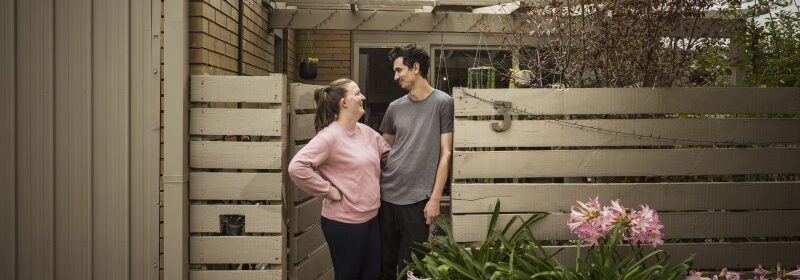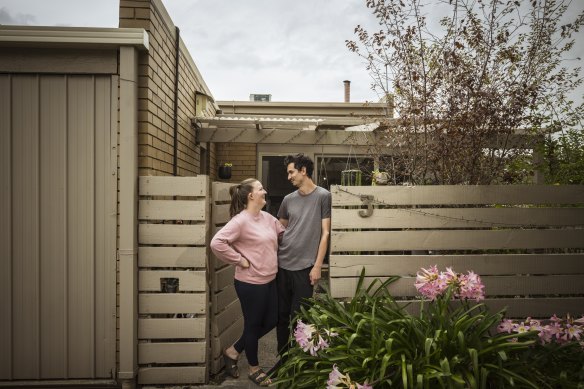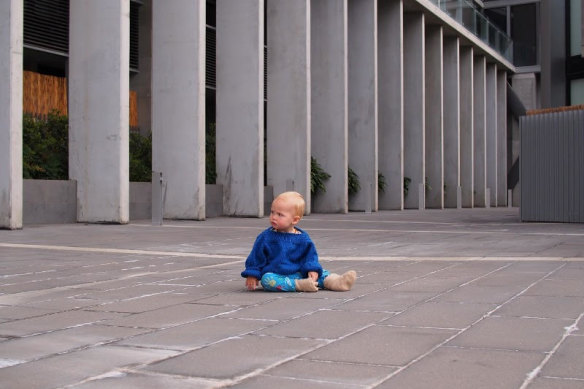Why ‘family-friendly’ apartments and townhouses are key to slowing urban sprawl

Key points
- A lack of good quality three and four-bedroom homes in inner and middle ring Melbourne is contributing to huge growth in greenfield areas.
- Research by Infrastructure Victoria shows one in four greenfield buyers would live in established parts of Melbourne if there were three or four-bedroom homes at the same price.
- A call for more ‘family-friendly’ apartments and units comes alongside nine other key recommendations to overhaul Victoria’s property market.
Melbourne urgently needs more ‘child-friendly’ apartments and townhouses in developed suburbs if the state has any hope of slowing growth on the city’s exploding greenfield fringe, says Victoria’s peak infrastructure body.
Families need homes with a place to park a pram, bathtubs, bedrooms big enough for two children and outdoor play space.
But the lack of suitable three and four-bedroom apartments and townhouses that are affordable for moderate-income families (those who earn $88,000 to $132,020) has been identified by Infrastructure Victoria as one of the key drivers for over-development in growth areas with lagging infrastructure.
Rebecca and Jordan Smith outside their recently purchased three-bedroom townhouse in Ringwood East.Credit:Chris Hopkins
The agency’s report, released on Tuesday, says 1.3 million new homes need to be built in Melbourne to meet projections that the city’s population will swell from 5 million people to more than 8 million over the next 30 years. Its survey of 6000 people showed 60 per cent of growth in fringe areas were families with children, compared to 40 per cent in established suburbs.
Infrastructure Victoria chief executive Jonathan Spear said the agency’s research found one in four people would trade a detached greenfield house for a quality townhouse or three-bedroom apartment in an established area if they were the same price.
“While families that are moving to greenfield [areas] currently don’t want to go into high-rise one or two-bedroom apartments, if we can offer child-friendly design for low-rise apartments with three or four bedrooms, that could open up some choices for families that they don’t otherwise have,” Spear said.
The report also recommends abolishing stamp duty and the first-home-owner grant, which distort purchasing decisions.
Rebecca and Jordan Smith moved from their rented apartment in Hawthorn East into their first purchased home- a three-bedroom townhouse – in Ringwood East last year.
The couple don’t have children yet but are planning to raise a family, which meant three-bedrooms was a key priority. They had briefly considered a detached home further out of the city but said the trade-off with longer commutes to work was too much.
“We knew that getting a house [close to public transport] was just a fantasy,” said Jordan. “It’s not necessarily that this is our family home forever but it’s something to start us off.”
”I expect a lot of people don’t want to have a shared wall with their neighbours but we were willing to deal with that,” Jordan said. “I think it’s exaggerated how much of a factor that is”.
Infrastructure Victoria wants the Victorian government to go further in its new apartment design standards and introduce voluntary guidelines for developers for best practice family-friendly design.
The report also proposed fast-tracking planning approval for high-quality townhouses, better standards for low-rise apartments and to cut down on red tape for subdividing blocks for townhouses to avoid prolonged disputes in VCAT.
Nick West, Sales Director at Nelson Alexander Melbourne, said three-bedroom units in Melbourne were few and far between, and anything within an affordable range for middle-income earners was “snapped up” quickly – especially on the back of the pandemic when people were seeking an extra room as an office to work from home.
He identified two reasons for the lack of supply of larger apartments. Developers could get a better return on fitting two apartments into a space than one large one, he said. If they did create three or more bedroom apartments, they were financially better off creating luxury, high-end developments for older downsizing buyers than young families.
“The average empty nester will pay up to $20,000 a square metre, that’s completely out of the affordability zone for middle-income families,” he said.
Examples of density done well, according to Infrastructure Victoria
Architect Natalia Krysiak, who is developing a style guide on family-friendly developments for local councils in NSW, said ‘family-friendly’ requirements can include bedrooms big enough for two children to sleep and study, a laundry that is designed to be used for several loads of washing a day, bathtubs for bathing toddlers, kitchens large enough for several people to cook, corridors and storage areas big enough for prams and scooters.
“Some of these are very simple considerations, but without them, they can make a home completely unlivable for a family,” she said.
The Victorian government is already trialing ‘child-friendly’ apartment designs in its two-year ‘Future Homes’ trial in the City of Maribyrnong, where a range of high-quality townhouse plans have already been approved and can be fast-tracked to construction without usual planning processes.
Deakin University’s Dr Fiona Andrews – whose research was used by the government and architects in the scheme – said parents she surveyed were also concerned about unusable or unsafe communal areas and car parks.
A baby in the communal area of an apartment complex in Melbourne. This photo was submitted by a mother participating in research into the need for ‘family-friendly’ apartments who captioned it ‘concrete non-playground’. Credit: Supplied (HOME – Deakin University Strategic Innovation Research Centre)
“Can you imagine trying to use a car stacker with two young children?” she said. “Pretty challenging”.
Matthew Kandelaars, Victorian chief executive of the property developers’ peak body, Urban Development Institute of Australia, said his industry also supported better quality, higher-density living in Melbourne’s already established areas, but said such homes would continue to come at a cost unless done at scale.
He said local governments, and vocal community groups pushing back on in-fill development were the biggest roadblocks to developments that would result in prices of three and four-bedroom apartments coming down.
“This can’t be done overnight,” he said. “Time and time again, developers are going into these processes in good faith based on the planning provisions in that area in that time, and roadblocks are continually out in the way.“
With Patrick Hatch, Cara Waters
The Morning Edition newsletter is our guide to the day’s most important and interesting stories, analysis and insights. Sign up here.
Most Viewed in National
From our partners
Source: Read Full Article


